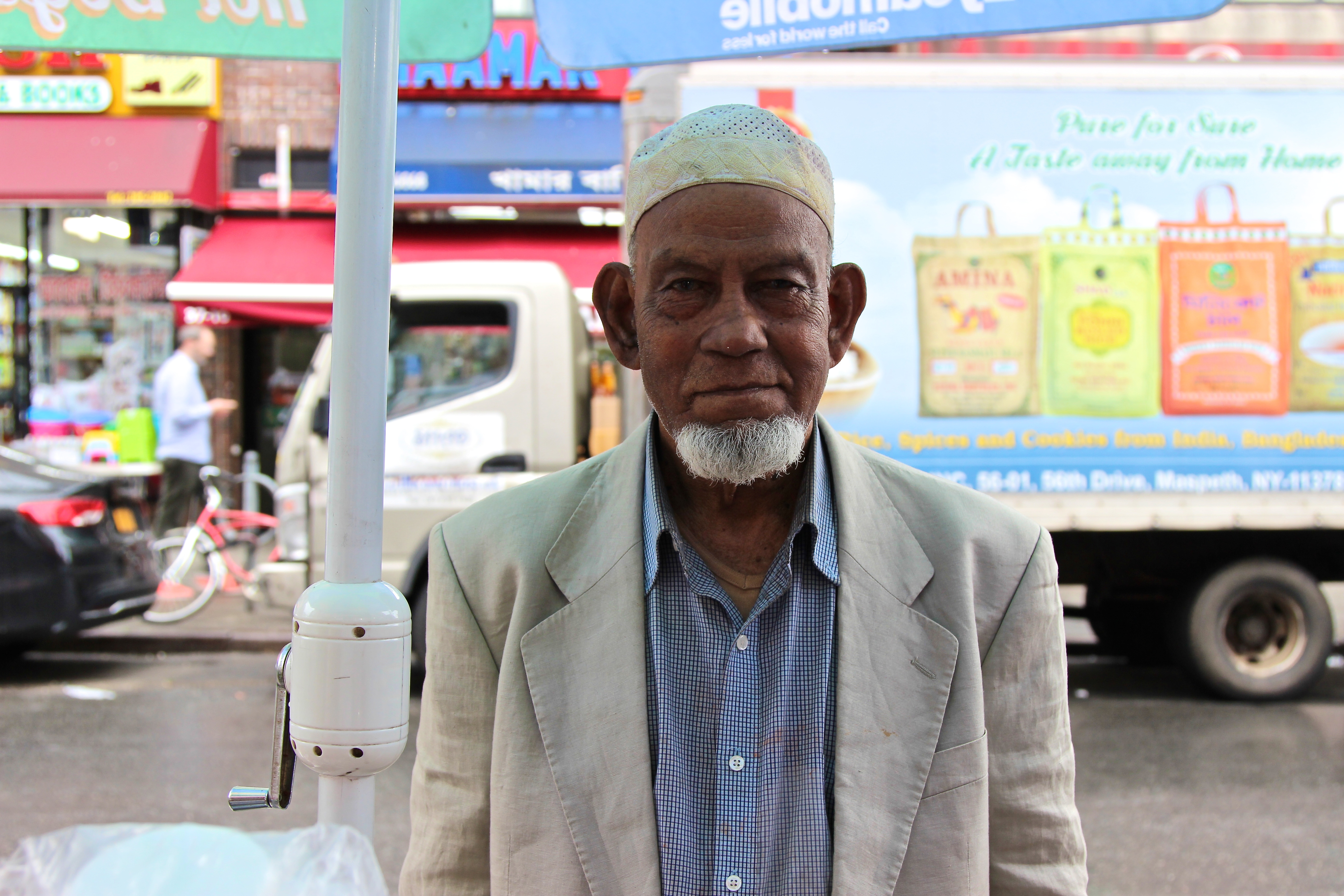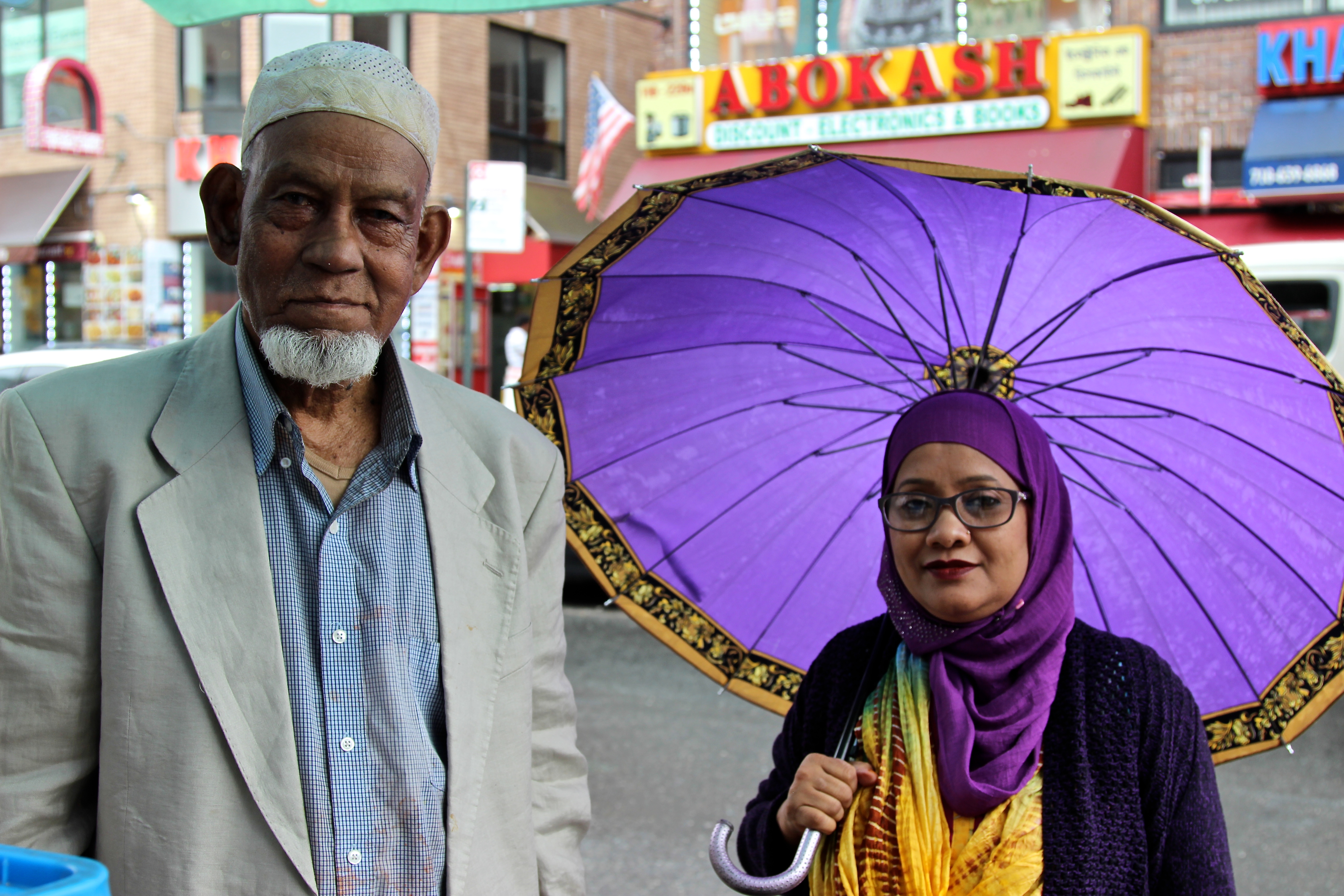NYC Settles With Hundreds of Street Vendors After Trashing Their Food Carts
May 7, 2019When I first meet Sanwar Ahmed on 73rd Street off of Roosevelt Avenue in Jackson Heights, Queens, it’s already started to rain in earnest, but he seems unfazed. Nothing short of a blizzard can keep the 89-year-old from this spot, where he sells bottled water and jhal muri, a Bengali street snack consisting of a tongue-tingling blend of puffed rice and black chickpeas laced with mustard oil, green chile paste, and spices. Flash-fried soybeans and noodles add crunch, while a fistful of diced tomatoes, cilantro, and chopped onions makes for a bright counterpoint. At $3 a bowl, slinging jhal muri is hardly a lucrative business, but it allows Ahmed to eke out a modest living of $40 or $50 a day. From that, he spends $400 a month on rent for a mattress in a basement he shares with two other men, then tries to scrape together a couple hundred dollars to send to his wife and two daughters back in Bangladesh.
Over the years, Ahmed has become a fixture in the community, where most people know him simply as Baul Dada, a nickname that roughly translates as “singing grandfather.” To pass the time, he often sings of his own story, of self-imposed exile in America and hardship. He’s appeared on the blog for Anthony Bourdain’s Parts Unknown, posed for photos with Cynthia Nixon, and featured prominently in the Museum of Food and Drink (MOFAD)’s exhibition Knights of Raj about the lives of Bangladeshi food workers in New York.
“People in the community love him,” Kazi Fouzia, a lead organizer at Desis Rising Up & Moving (DRUM), a Jackson Heights-based advocacy group, tells me as she unfurls a royal purple umbrella. Originally from Dhaka, Bangladesh, Fouzia came to the United States as an undocumented immigrant more than a decade ago, then chose to fight for the rights of other South Asians after her asylum status was approved. "I always would pass him in the street and say, ‘Hello, Dada, how are you?’ but it was years before I learned of his situation.”

Like many of New York’s immigrant street food vendors, Ahmed’s journey to New York was a roundabout one. After stints in Kuwait, London, and Iraq, a trafficker brought him to the United States, where he worked as a tandoori chef in restaurants around the midwest. After ending up in Queens, he found himself without the paperwork necessary for a restaurant job, so he set up shop on the street. The going rate for a street food vending permit is around $25,000 on the black market—a figure far beyond Ahmed’s means. For years, he dutifully paid the tickets that police officers served him for vending without a permit. Fouzia still remembers the day in 2016, when Ahmed came into her tiny second-floor office in tears after the Department of Health and Mental Hygiene (DOHMH) trashed his cart—and with it, his sole source of livelihood.
“They took everything from me. I tried to save my food, but they threw away my food and my cart and everything,” Ahmed says. “I don’t have any family members here and I don’t like to beg people for money. That’s why I want to work to save something. Even when the cart was taken away, I just kept going without any food.”
Ahmed is one of more than 300 vendors whose property was illegally destroyed by authorities, according to a recent class-action lawsuit. While the City of New York has a right to fine vendors operating without a permit, it is against the law to take away vendors’ property without giving them some means of retrieving it. In this court battle, plaintiffs alleged that police officers taunted them by saying their food was “dirty” and that sanitation workers would sometimes crush carts in front of vendors’ eyes. After nearly two years, the City of New York settled and agreed to pay out $188,531 to vendors, including approximately $2,500 to Ahmed.
As I walk down Roosevelt Avenue, I encounter plenty of other tales of police harassment, from vendors with and without permits. A woman named Rosa, who has a legal vending permit, has video footage of legitimate vendors being chased off by officers. Maria Calle, an Ecuadorian immigrant who has been in the neighborhood for two decades, lost her shish kebab truck in 2017, while over in Flatbush, Ana Buestan, also from Ecuador, had her Italian ice cart confiscated in 2016.
“We had heard anecdotally about this for a little while, but we didn’t have a firm grasp on who it was happening to or when it was happening,” says Matthew Shapiro, Legal Director at the Street Vendor Project, an arm of the local non-profit Urban Justice Center, who spearheaded the lawsuit. “The U.S. Constitution says that no one shall be deprived of property. It’s pretty well-established that if you want to take someone else’s property, regardless of what it is, there has to be some due process. If you just throw it in the garbage, there’s no way of challenging that.”
Since legal victories for New York’s street food vendors are few and far between, this feels like cause for celebration. Still, while Shapiro hopes that this means that the city will treat street vendors with more dignity in the future, he believes there is still considerable work to be done.
“I think that it will have an impact with regards to following the proper retainment procedures, but the real solution is still to increase the number of permits,” Shapiro says.

The larger overarching legal battles around the precarious status of the city’s street food vendors are likely to continue for the foreseeable future. For Fouzia, however, the real fight is the human-scale one being carried out on the streets of her neighborhood. She does not expect to change the system any time soon, but she hopes to make at least a small difference in the lives of those who, like Ahmed, are struggling to get through each day. The octogenarian dreams of returning to Sylhet, Bangladesh one last time. DRUM has already raised more than $5,000 through an ongoing crowdfunding campaign and hopes to use it along with his portion of the settlement money to help him return to his homeland after so many years abroad.
“With an 89-year-old, you never know how much time they have left. We want him to go home and meet his family. He wants to go back,” she says. “He’s been apart from them the last 38 years. They deserve to see him alive, not as a body.”


